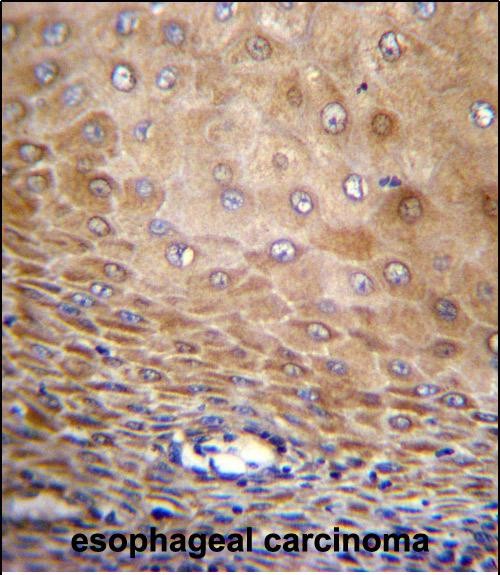

| WB | 1/1000 | Human,Mouse,Rat |
| IF | 咨询技术 | Human,Mouse,Rat |
| IHC | 1/100-1/500 | Human,Mouse,Rat |
| ICC | 技术咨询 | Human,Mouse,Rat |
| FCM | 咨询技术 | Human,Mouse,Rat |
| Elisa | 咨询技术 | Human,Mouse,Rat |
| Aliases | Transmembrane protein 43, Protein LUMA, TMEM43 |
| Entrez GeneID | 79188 |
| WB Predicted band size | 44.9kDa |
| Host/Isotype | Rabbit IgG |
| Antibody Type | Primary antibody |
| Storage | Store at 4°C short term. Aliquot and store at -20°C long term. Avoid freeze/thaw cycles. |
| Species Reactivity | Human |
| Immunogen | This TMEM43 antibody is generated from rabbits immunized with a KLH conjugated synthetic peptide between 195-223 amino acids from the Central region of human TMEM43. |
| Formulation | Purified antibody in PBS with 0.05% sodium azide. |
+ +
The TMEM43 (Transmembrane Protein 43) antibody is a research tool targeting the TMEM43 protein, a conserved transmembrane protein with roles in cellular signaling, nuclear envelope organization, and cell adhesion. TMEM43 is widely expressed, notably in cardiac and skeletal muscle, and is implicated in regulating lipid metabolism, mechanotransduction, and gene expression. Mutations in the TMEM43 gene, particularly the p.S358L variant, are strongly linked to arrhythmogenic right ventricular cardiomyopathy type 5 (ARVC5), a hereditary disorder causing ventricular arrhythmias and fibrofatty myocardial replacement. This mutation disrupts cell-cell adhesion and gap junction function, contributing to disease pathogenesis.
TMEM43 antibodies, typically raised in rabbits or mice, are used in techniques like Western blotting, immunohistochemistry (IHC), and immunofluorescence (IF) to study TMEM43 expression, localization, and dysfunction in disease models. Commercial antibodies are validated for specificity to human, mouse, or rat TMEM43 isoforms. Research utilizing these antibodies has advanced understanding of TMEM43's interaction with nuclear lamina proteins (e.g., emerin) and its role in ARVC5. aiding therapeutic discovery. However, challenges remain in standardizing antibody validation and elucidating TMEM43's full mechanistic spectrum across tissues.
×